Explore Wat Phra That Doi Suthep: Lanna Kingdom's Treasure
Doi Suthep, a prominent mountain located 15 kilometers west of Chiang Mai, Thailand, boasts an elevation of 1,676 meters, making it a striking natural landmark in the region. Part of a granite mountain range, Doi Suthep is accompanied by its slightly taller counterpart, Doi Pui, which together create a picturesque backdrop to the city. Doi Suthep is home to the revered Wat Phra That Doi Suthep temple, a significant Buddhist pilgrimage site offering panoramic views of Chiang Mai, as well as lush hiking trails, waterfalls, and diverse flora and fauna that attract thousands of visitors annually.
It is impossible to visit Chiang Mai without seeing Wat Phra That Doi Suthep, the most important sacred place in the city. Especially notable is the golden Chiang Saen-style pagoda, which has been revered by the people of Chiang Mai since ancient times.
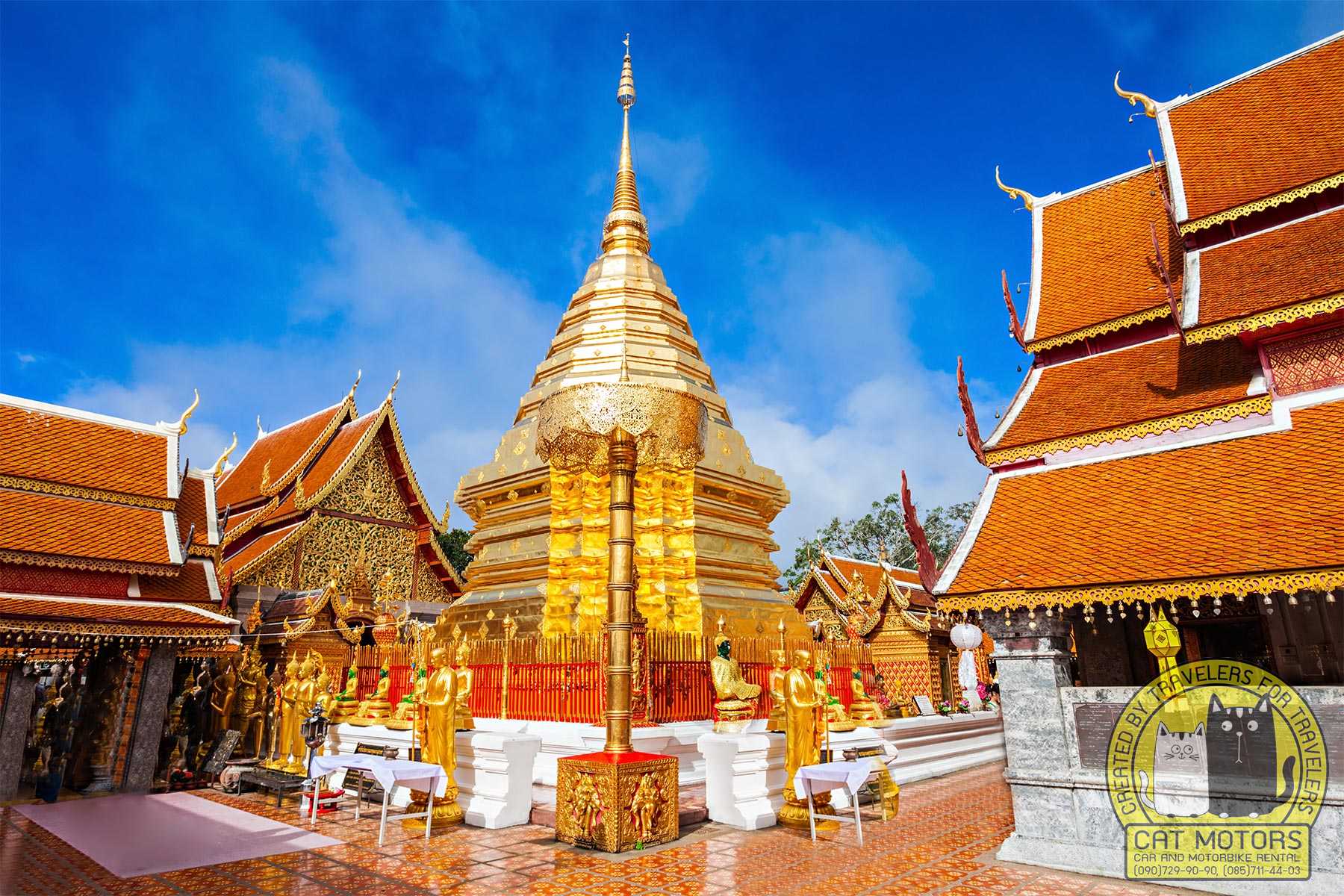
History of Doi Suthep
According to Doi Suthep’s history, this mountain was originally the residence of a hermit named Suthewa, which corresponds to the word Suthep, which is the origin of the name of this high mountain.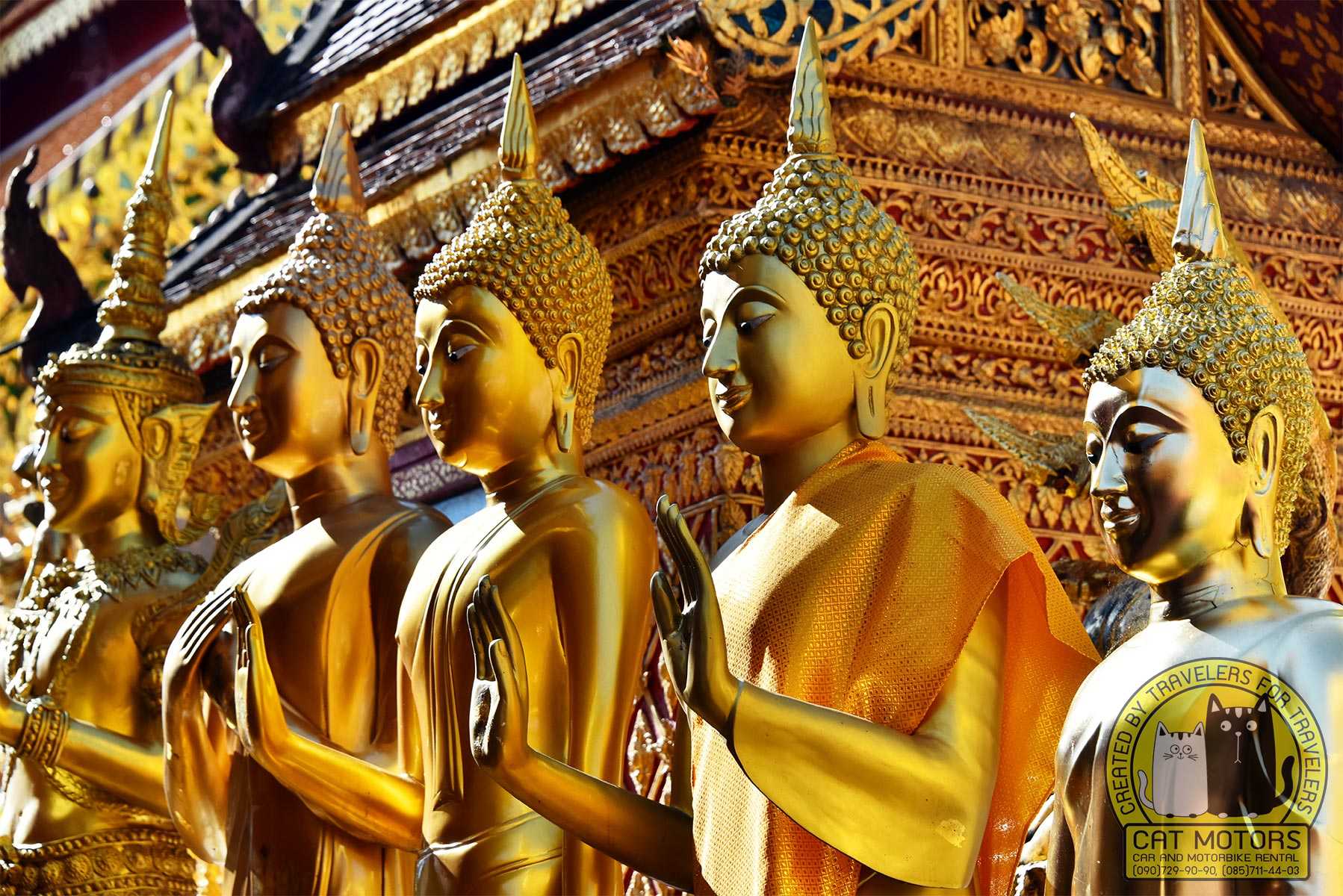
Mythology of Doi Suthep
According to mythology, Phra Chao Kue Na Thammikarat divided the relics into two parts. The first one was kept at Phra That Wat Suan Dok, and the other was carried up on the back of the holy elephant. Phra Chao Kue Na Thammikarat prey that wherever the herd of elephants stops, Phra That will be erected there.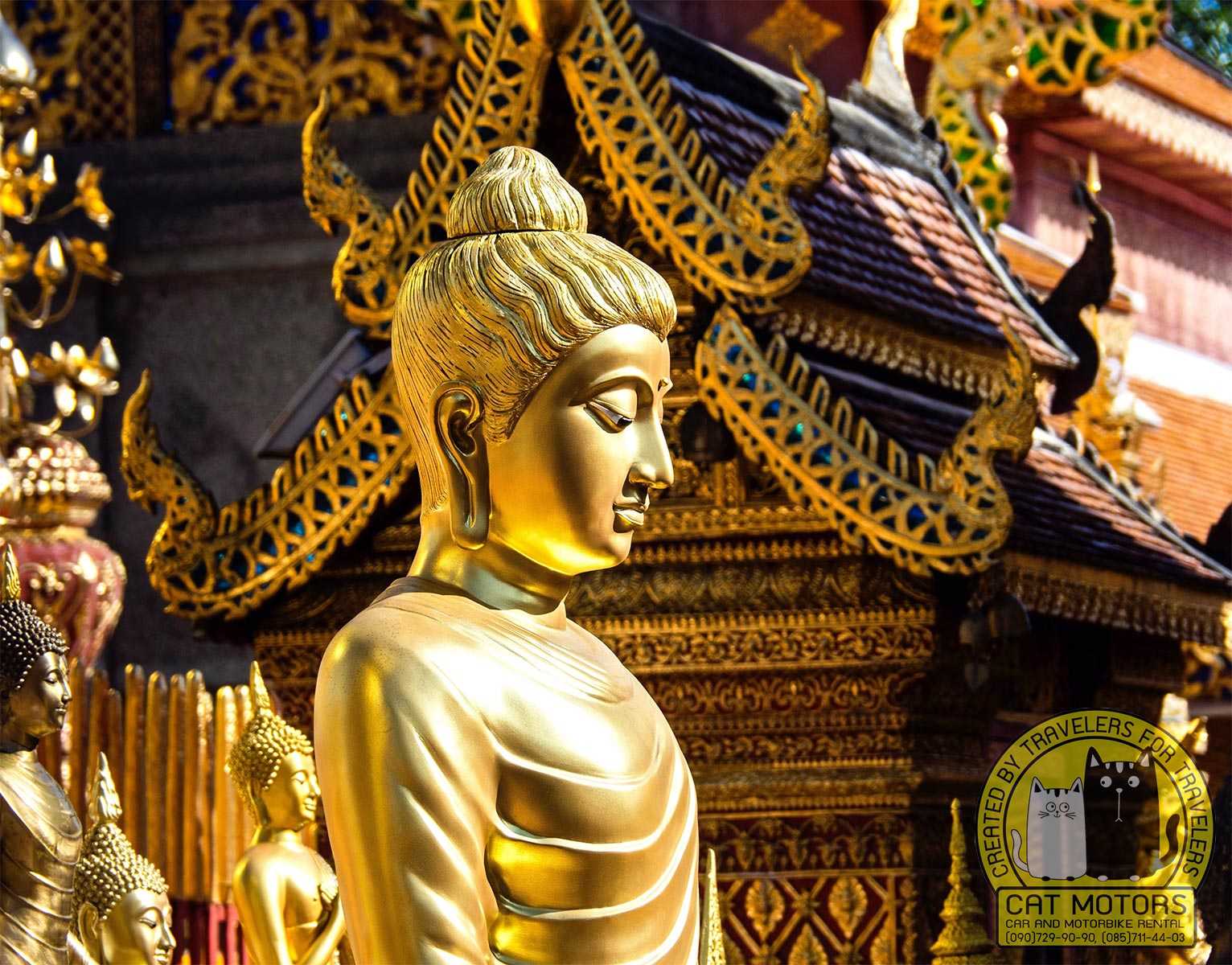
Road leading to the temple
Phra That Doi Suthep is 689 meters above the plains of Chiang Mai and 1,046 meters above sea level. In the past, it was tough for those people who would like to make worship at Phra That Doi Suthep such that they must walk on foot to the top of Phra That Doi Suthep.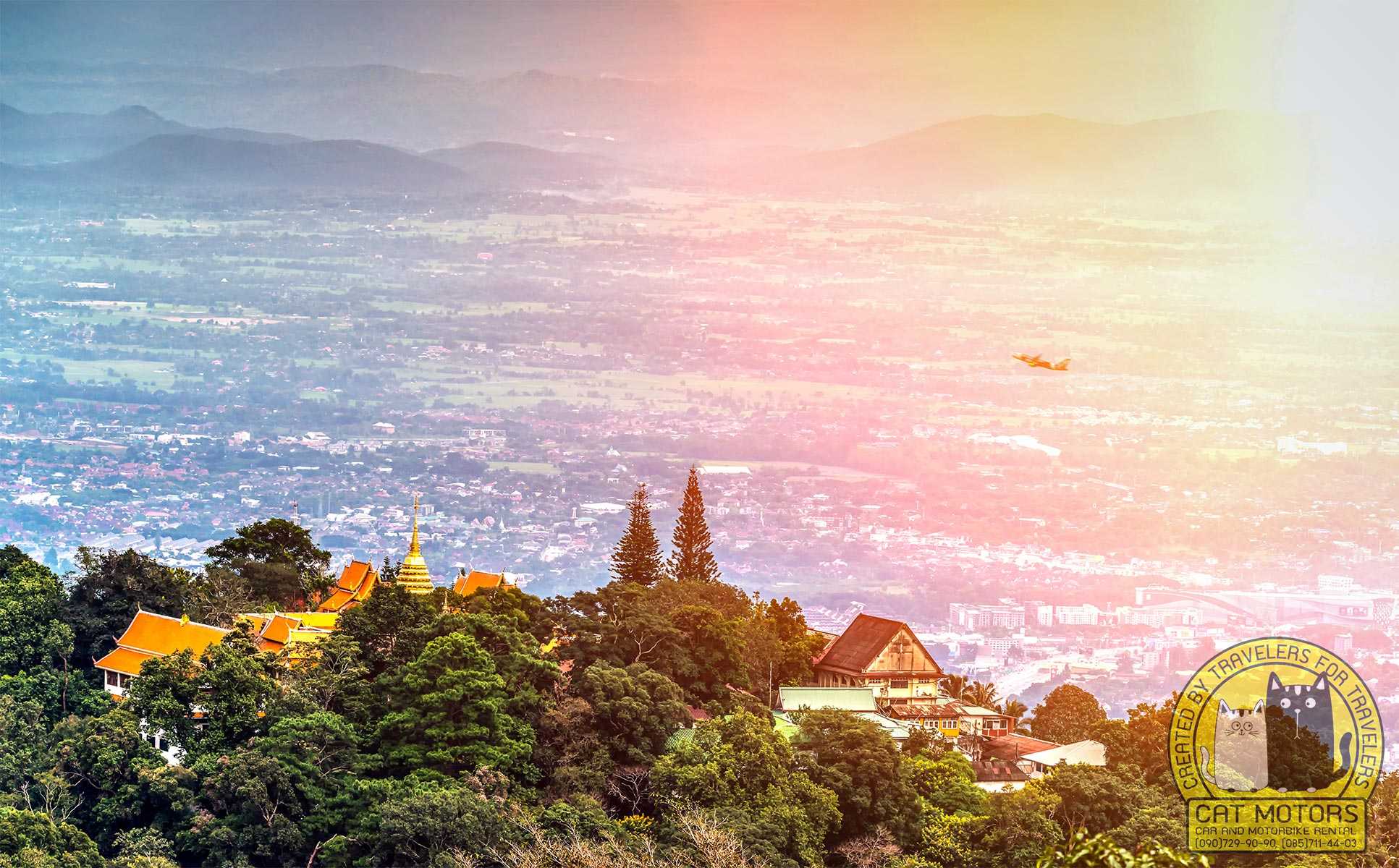
Ascent to the Doi Suthep Temple
There are two options for travelling to worship.Up the stairs
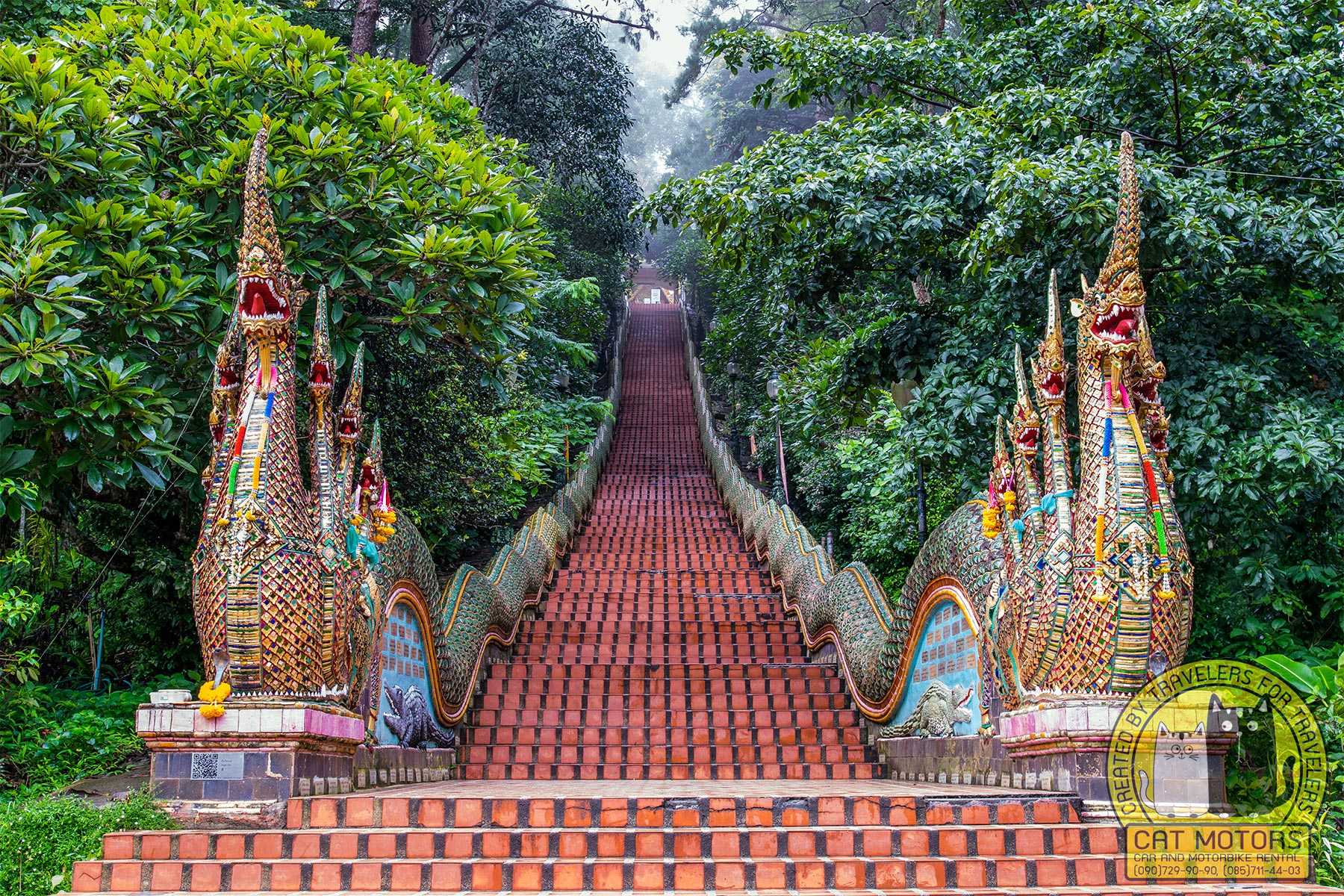
By elevator
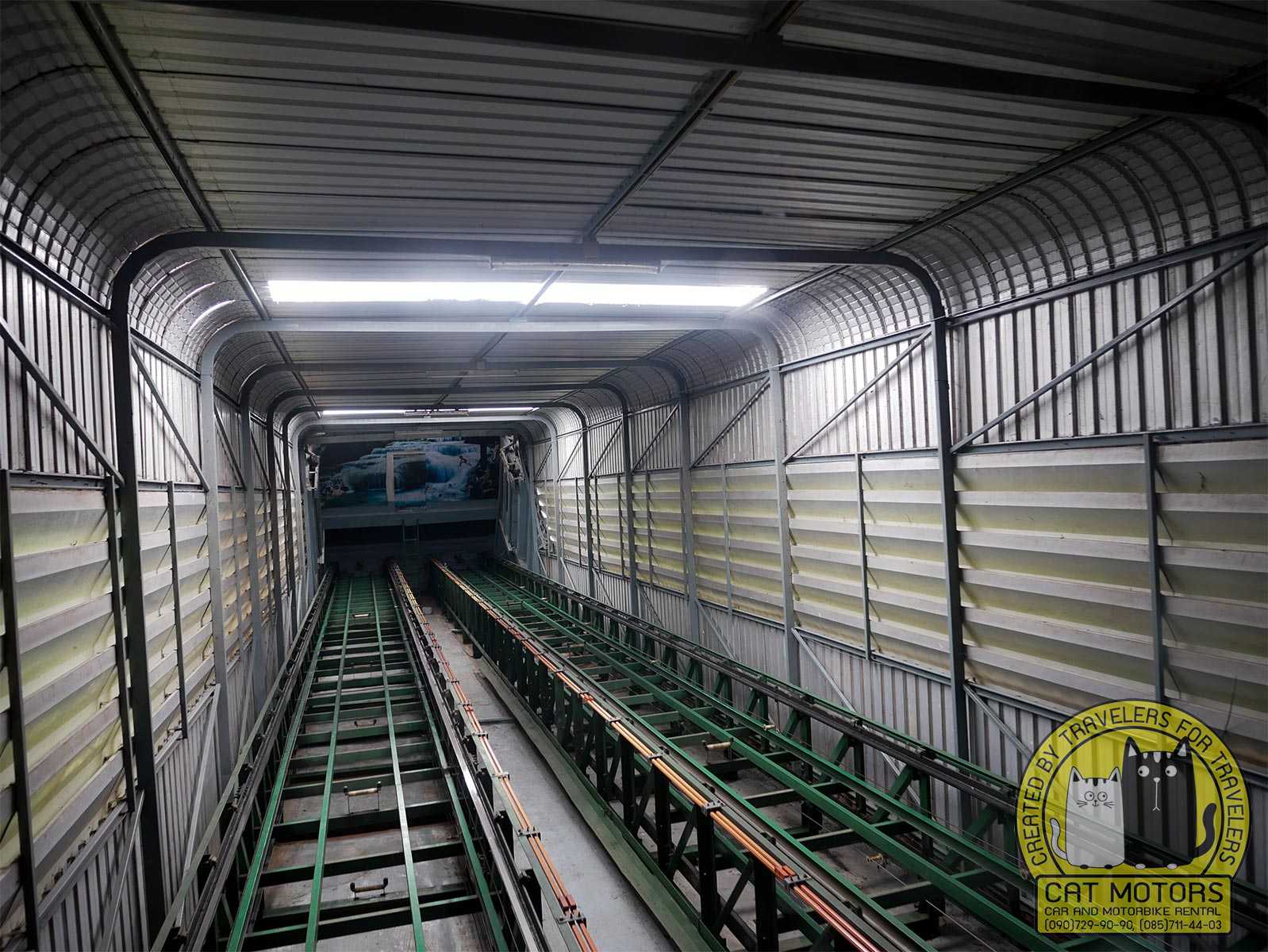
Phra Chedi Doi Suthep
This temple’s antiquities include a Chiang Saen-style chedi with a high base and an octagonal bell recess built in the form of Lanna art. It is covered with two layers of Thong Changko (A Brass metal thin sheet), which contains Lord Buddha’s relics underground.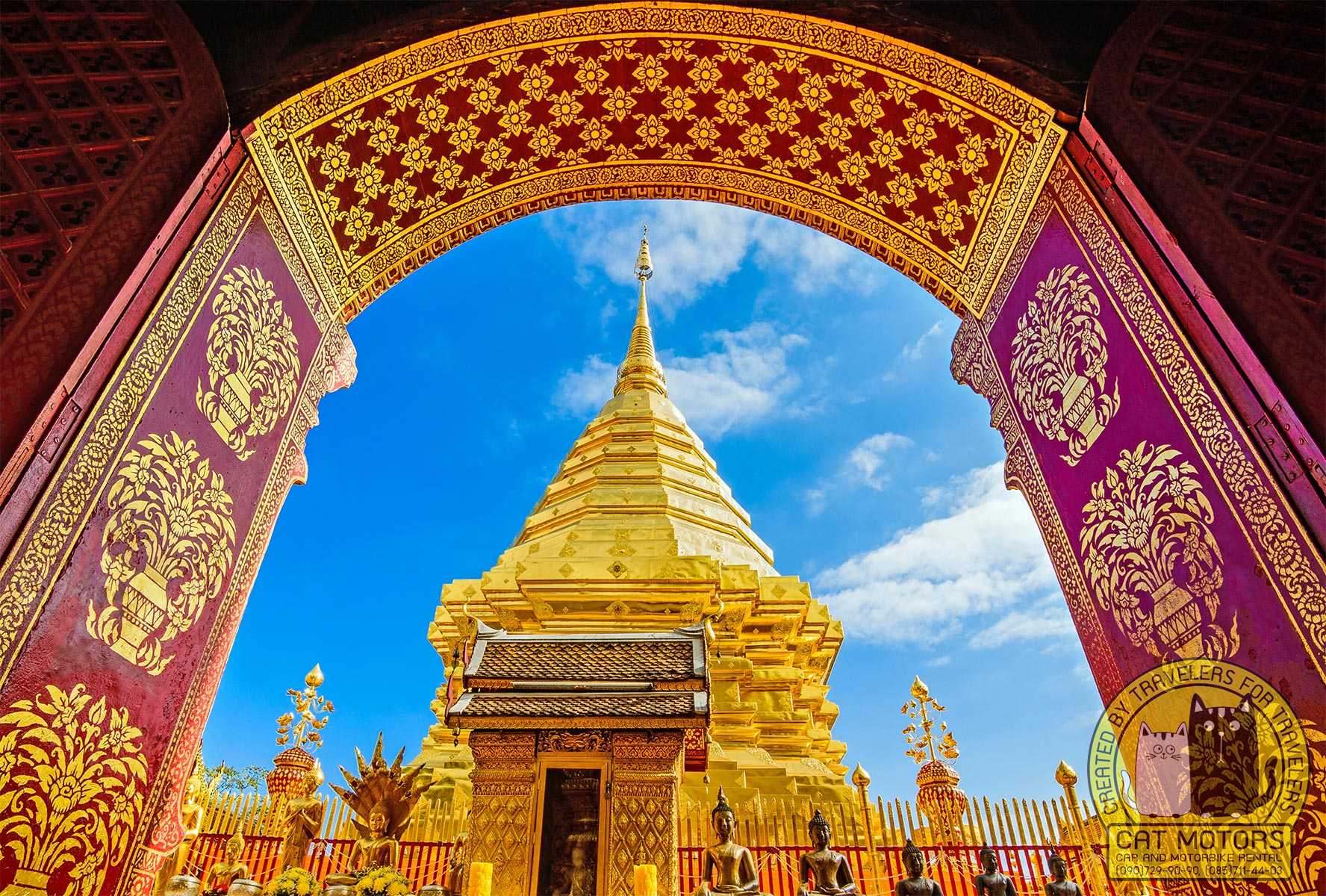
The tradition of walking up to Doi Suthep
The tradition of walking up to Doi Suthep to revere Saparami is held to honor Phra That Doi Suthep. A water procession for pouring the relics will take place one night before Visakha Bucha Day, in which monks, novices, and Buddhists from various communities participating in this tradition to walk for 11 kilometers to the mountain.To worship Phra That, the popped rice, flowers, joss sticks, and candles shall be prepared before walking three rounds to the right, saying the praised words during worshipping, and making a wish by paying tribute to the relics in all four directions, which give various virtues. For example, on the north side, you can wish to be wise like the Full moon (Representative of cleverness in Thai belief). In the south, you can wish to become a monk and be ordained in Buddhism. On the east side, you can wish to live in heaven when you are passed away, and the west side is the most revered location for relic worship. The activity you should not miss when travelling to Wat Phra That Doi Suthep is to worship at the Kruba Si Wichai Monument, the Lanna saint enshrined at the foot of Doi Suthep for prosperity purposes.
Wat Phra That Doi Suthep Dress Code
Visiting Wat Phra That Doi Suthep, a revered temple in Chiang Mai, Thailand, requires adherence to a specific dress code that respects the sanctity of this Buddhist site. Here’s a detailed guide to ensure you’re appropriately dressed for your visit:
- Cover Shoulders and Knees: Both men and women should wear clothing that covers their shoulders and knees. This typically means avoiding sleeveless tops, tank tops, short dresses, and shorts. Wearing a t-shirt or a blouse paired with long pants or a long skirt is ideal.
- Avoid Revealing Clothes: Clothes that are too tight, transparent, or revealing are not suitable for a temple visit. The emphasis is on modesty, so it’s best to avoid any clothing that might be considered disrespectful in a place of worship.
- Footwear: Shoes must be removed before entering the temple buildings, which is a common practice in many Buddhist temples. It’s advisable to wear comfortable shoes that are easy to take off and put back on. There are racks or designated areas where you can leave your shoes.
- Hats and Sunglasses: It’s acceptable to wear hats and sunglasses while exploring the temple grounds for protection from the sun. However, it’s considered respectful to remove them when entering the temple buildings or when in the presence of monks.
- Colors: There is no strict rule regarding the color of your attire, but it’s generally advisable to avoid overly bright or flashy clothes. Subdued or neutral colors are more in keeping with the temple’s serene and spiritual atmosphere.
- Special Ceremonies: If you happen to visit during a special ceremony or religious event, it is especially important to adhere to the dress code respectfully. These occasions are particularly sacred, and dressing appropriately is a sign of respect for the temple and its devotees.
- Rent or Borrow Clothes: In case you arrive at the temple and realize your attire is not appropriate, don’t worry. There are often stalls near the temple entrance where you can rent or borrow suitable clothing, like shawls or sarongs, to cover up.
Interacting with Monks: If you wish to speak to a monk, remember that women should not touch monks or hand things directly to them.
Following these guidelines not only shows respect for the religious and cultural practices of Thailand but also enhances your experience at Wat Phra That Doi Suthep, allowing you to fully appreciate the beauty and sanctity of this important spiritual site.
YT Video Review
A Special Place In Chiang Mai
Monk's Trail To Wat Phra That Doi Suthep
FAQ
Phra That Doi Suthep is not merely a temple; it is a beacon of faith and history, perched on the mountain Doi Suthep. This sacred site is believed to house a relic of the Buddha himself, making it a place of pilgrimage and reverence. The architecture is a testament to Lanna culture, with intricate carvings and gilded umbrellas that tell a story of devotion and artistry.
To visit Doi Suthep is to connect with the divine and the earthly. It offers a blend of spiritual enrichment, cultural immersion, and breathtaking vistas. Each step is a story, each sculpture a lesson, and each view a memory. Whether you seek tranquility, inspiration, or simply the beauty of Lanna architecture, Doi Suthep is a place where such aspirations are fulfilled.
To ascend to the spiritual heights of Wat Phra That Doi Suthep, you have several paths before you. If you’re starting from Chiang Mai, the most common conveyance is by the red songthaews, the local shared taxi-trucks, which you can board at Huay Kaew Road, near Chiang Mai Zoo. Alternatively, for the independent spirit, renting a motorbike allows for a scenic ride up the mountain, while the more fitness-inclined might prefer to rent a bicycle. There are also organized tours that include transportation if you prefer a guided experience.
Wat Phra That Doi Suthep embraces the sun’s rhythm, opening its gates to visitors from 6:00 am and bidding farewell at 6:00 pm. However, the times may vary during special religious festivals, so it is wise to check locally for any changes during your visit.
Doi Suthep, a mountain of spiritual and natural majesty, rises approximately 1,676 meters (5,499 feet) above sea level. As you ascend, the air grows cooler and fresher, offering respite from the heat of the plains below and a panoramic view that stretches to the horizon.
To reach the temple’s heart, you must conquer the Naga Serpent Staircase, a climb of 306 steps. This ascent is not just a physical challenge but a meditative journey, with the serpents’ watchful eyes guiding you towards the spiritual summit. For those who wish to keep their breath for prayer, there is a funicular railway that offers a gentler rise to the temple grounds.
The temple complex is not measured by its width but by its spiritual expanse. It encompasses several shrines, halls, and statues, each with its own space for worship and contemplation. The temple’s expansive terrace offers a place to gaze outward onto the city of Chiang Mai and inward into one’s soul.
In Doi Suthep, you can visit the famous Wat Phra That Doi Suthep Temple. It’s a place with lots of gold and a big statue of a sitting Buddha. You can walk around, take photos, and if you want, light a candle or say a little prayer. There’s also a big lookout where you can see the whole city of Chiang Mai from above. It’s a good place to learn about Thai culture and see some really cool art.
Because you’re visiting a special religious place, you should wear clothes that cover your shoulders and knees. A t-shirt and long pants or a long skirt are good choices. Wear comfortable shoes because you’ll be walking a lot, and there are many stairs to climb to get to the temple.
The temple closes in the evening, so you can’t go inside after it gets dark. But the road up the mountain has some spots where you can see the city lights at night. If you go at night, make sure to stay safe and stick to the lookout areas.
Sticky Waterfall, which is really cool because you can climb right up it without slipping, is about an hour and a half drive from Doi Suthep. It’s not very close, so it’s a good idea to make a separate trip to go there.
To get up to the temple, you can climb a lot of stairs – there are over 300! It might take you about 10 to 30 minutes to get to the top, depending on how fast you go and how many times you stop to rest or look at the statues and the jungle around you.
You’ll want at least 1-2 hours to see the temple and enjoy the views. If you like to take your time, maybe sit and think, or if you want to talk to the monks, you might want to stay longer, like half a day.
To see the sunrise from Doi Suthep, you need to get up super early. The sun comes up around 6 or 6:30 am, so you have to leave Chiang Mai by 5 am. You can take a taxi or a rented motorbike to get there. Remember, it’s still going to be a little dark, so be careful on the road.
Doi Suthep National Park is all around the temple. It’s got lots of nature trails, big trees, and sometimes you can see cool birds or squirrels. You can walk on the trails or drive to different parts of the park. Just follow the signs or ask someone if you’re not sure where to go.
There are a few waterfalls in Doi Suthep National Park, like the Monthathan Waterfall. You can hike there or go by a car or motorbike. The waterfalls are great for cooling off, so bring a swimsuit and a towel if you want to take a dip.
Wat Umong is a unique temple in Chiang Mai, known for its ancient tunnels and large stupa. To get there from Doi Suthep, the easiest way is to take a red songthaew (those are the red trucks that act like shared taxis). It’s not walking distance, so you’ll need a ride. It should take about 15-20 minutes by car. If you’re feeling adventurous, you could rent a scooter, which gives you the freedom to explore on your own time.
It’s pronounced ‘Doy Soo-tep.’ In Thai, ‘Doi’ means mountain, so you’re saying ‘Mountain Suthep.’ Just try to say it smoothly and with a smile, and the locals will understand you.
It’s not about better; it’s about what you want to see! Doi Inthanon is the highest mountain in Thailand, so it’s cooler and has lots of nature trails and waterfalls. Doi Suthep is closer to Chiang Mai and has the famous temple with a view over the city. If you want nature and cooler weather, go to Doi Inthanon. If you want a temple with a view, choose Doi Suthep.
Yes, Doi Suthep is usually open on New Year’s Day. It’s a popular time for both tourists and locals to visit, so it might be more crowded than usual. Get there early to avoid the biggest crowds.
Yes, there is. Since it’s a holy place, you should wear clothes that cover your shoulders and knees. Think of it as a sign of respect. They usually have scarves or sarongs for rent at the entrance if you forget to bring your own.
Besides the temple, you can explore the cool trails in the national park. You could also check out the nearby Hmong village where you can learn about the local hill tribe’s culture. Or go see the beautiful Bhubing Palace, which is the royal family’s winter residence. There’s also a zoo and a couple of waterfalls nearby.
The temple usually lets the last visitors in around 5 pm to 6 pm. It’s a good idea to arrive well before closing time to make sure you have enough time to see everything without rushing.
The best time to visit is early in the morning or late afternoon when it’s cooler and less crowded. The light is really beautiful for photos at these times, too. November to February is the best season to visit because it’s not too hot.
Wat Phra That Doi Suthep is on Doi Suthep mountain, which is to the west of Chiang Mai city. It’s about 15 kilometers from the city center, which is about a 30-minute drive. You can see it from the city because it’s up high on the mountain.
Explore Northern Thailand’s stunning landscapes and vibrant culture with our comprehensive travel guides. Highlighting the best scenic routes and local attractions, our guides ensure you experience the best the region has to offer. Start by visiting our motorbike rental in Chiang Mai. Be sure to review our terms and conditions for a seamless experience. With these resources, you can explore mountain trails and charming villages with confidence.
Our travel advice sections offer essential tips on staying safe and enjoying your trip to the fullest. Discover the best times to visit major attractions, learn about local festivals, and find out how to handle different road conditions. These insights will make your journey richer and more enjoyable. Join us in uncovering the breathtaking beauty and rich culture of Northern Thailand, ensuring a safe and memorable adventure.
Was this post useful for you?
You can rate it by clicking on a star
Average rating / 5. Vote count:
No votes so far! Be the first to rate this post.
We are sorry that this post was not useful for you!
Let us improve this post!
Tell us how we can improve this post?
- Author: Krit Sorenser
- Updated: March 26, 2025
- No Comments




